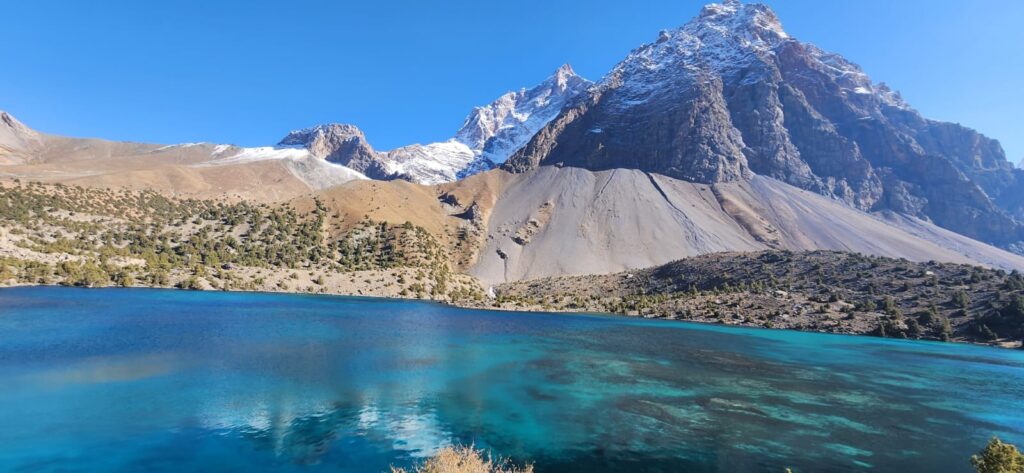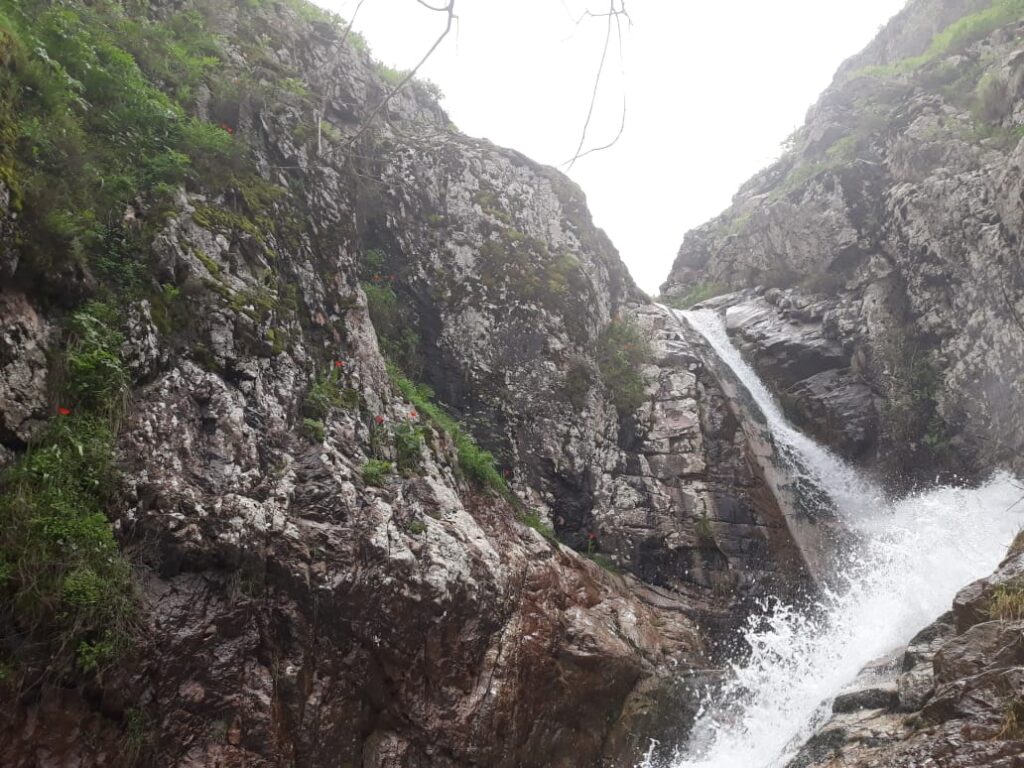The Fann Mountains rise like a sudden wall from the Zeravshan Valley, their jagged limestone peaks and turquoise lakes drawing both mountaineers and local families during the brief, luminous summers. Tucked in northwestern Tajikistan between the Zeravshan and Gissar ranges, this compact but dramatic mountain system has become one of the country’s primary destinations for trekking and domestic tourism. Trails wind past glacial lakes, juniper forests, and high passes, each bend offering new vistas. Yet these landscapes, celebrated for their beauty, are also under growing ecological pressure as tourism expands faster than infrastructure, management, or environmental safeguards can keep pace.
The geography of the Fann Mountains explains their allure. Glaciers carved deep valleys and left behind basins that filled with meltwater, forming lakes like Iskanderkul, Kulikalon, and Alaudin, all now iconic images of Tajikistan’s natural heritage. Elevations range from 1,500 to over 5,000 meters, packing sharp ecological gradients into a relatively small area. Alpine meadows bloom above juniper belts; scree slopes give way to hanging glaciers; streams drop suddenly in cascades. These tight vertical transitions make the Fanns visually striking and ecologically diverse, but also fragile. Vegetation clings to thin soils; slopes are prone to erosion; and water sources depend on seasonal snow and glacier melt.
Tourism in the Fann Mountains thrives on the very landscapes that are most sensitive to disturbance. Geography provides the spectacle but also sets the limits of what these ecosystems can absorb.
Tourist numbers have grown steadily since the early 2000s, spurred by improved road access from Dushanbe, international trekking interest, and Tajikistan’s gradual opening to regional travel. Domestic tourism surged as well, with families traveling to Iskanderkul for picnics, swimming, and weddings on scenic lake shores. The Alaudin Lakes area, once known mainly to climbers, now hosts seasonal tent camps and guided trekking routes. By the late 2010s, hundreds of small guesthouses and homestays had appeared in mountain villages, bringing income opportunities but also straining local water and waste systems (UNDP, 2018).
Environmental impacts concentrate along the most accessible lakes and trails. Informal campsites proliferate near lake shores, often lacking proper sanitation. Litter accumulates along popular routes despite periodic clean-up campaigns. Overgrazing near villages intensifies as tourism income allows for larger herds, which in turn deplete alpine meadows more quickly. Foot traffic erodes narrow trails, especially on steep scree, creating widening scars that concentrate runoff during storms. Tourist vehicles, particularly shared taxis and private jeeps, churn up dust on unpaved roads, contributing to local air quality issues in valleys.
Local residents describe these changes with mixed feelings. A guesthouse owner in Artuch said, “Before, only shepherds and a few climbers came here. Now there are buses from the city every weekend. We like the business, but the mountains are changing too quickly.” His observation captures the paradox: tourism brings economic lifelines to remote valleys but also accelerates ecological pressures that threaten the very assets drawing visitors.
Water is a central issue. Alpine lakes are fed by seasonal snowmelt and small glaciers, and their levels fluctuate naturally. But increased withdrawals for tourist facilities, combined with climate-driven shifts in meltwater timing, affect both water availability and quality. Greywater from lodges, camps, and informal bathing areas seeps into lake edges, introducing nutrients that can alter aquatic ecosystems. Iskanderkul, perhaps the most visited lake, already shows signs of eutrophication near popular beaches, with algal growth appearing earlier in the season (Kayumov, 2010).
Mountain lakes are not infinite reservoirs; they are delicate hydrological systems balanced between snow, ice, and evaporation. Increased use without careful management tips that balance in quiet but measurable ways.
Trails themselves reflect geographic vulnerability. Many trekking routes follow natural corridors formed by glacial valleys or traverse high passes. As use intensifies, path widening and shortcutting destabilize thin soils and alpine turf, leading to gullying. On steep slopes, these changes can trigger small landslides or accelerate scree movement. Unlike lowland trails, repair is difficult in the mountains due to short seasons and remoteness.
Regulation has lagged behind growth. Most tourism in the Fanns remains informal, with little centralized oversight of visitor numbers, waste disposal, or campsite management. Protected area designations are patchy, covering some but not all key sites. Environmental education for visitors is limited, and local authorities often lack resources to enforce regulations or invest in basic infrastructure. The result is a landscape absorbing mounting pressure without coordinated planning.
Climate change threads through these dynamics. Glaciers feeding the Fanns are retreating, altering stream flow patterns and potentially reducing water availability for both ecosystems and visitors in late summer (Sorg et al., 2012). Earlier snowmelt shifts the timing of peak flows, affecting lake levels and riparian vegetation cycles. Hotter, drier summers increase fire risk in juniper forests, especially near tourist areas where campfires are common. The same geography that concentrates ecosystems in narrow bands also concentrates vulnerabilities.
Quoting a mountain guide who has worked in the Fanns for two decades: “The lakes are still beautiful, but they feel more fragile now. Every year there are more people, more tents, more rubbish. The mountains don’t grow bigger; only the crowds do.” His words echo a sense of change that is both visible and cumulative.
From a high ridge overlooking Alaudin Lake, the turquoise water gleams beneath sheer limestone cliffs. Small tents cluster along the shore. Trails zigzag up toward Kulikalon, faint from distance but etched clearly into the slopes. It is easy to see why the Fanns captivate travelers. But it is equally clear that these landscapes, shaped by glaciers and gravity, are finely balanced systems. Tourism brings new pathways into these mountains; geography decides how much they can bear.
References
- Kayumov, A. (2010). Climate change impact on water resources in Tajikistan. Dushanbe: Tajik Hydromet.
- Sorg, A., Bolch, T., Stoffel, M., Solomina, O., & Beniston, M. (2012). Climate change impacts on glaciers and runoff in Central Asia. Nature Climate Change, 2(10), 725–731.
- UNDP (United Nations Development Programme). (2018). Sustainable tourism and biodiversity in Tajikistan. Dushanbe: UNDP.








